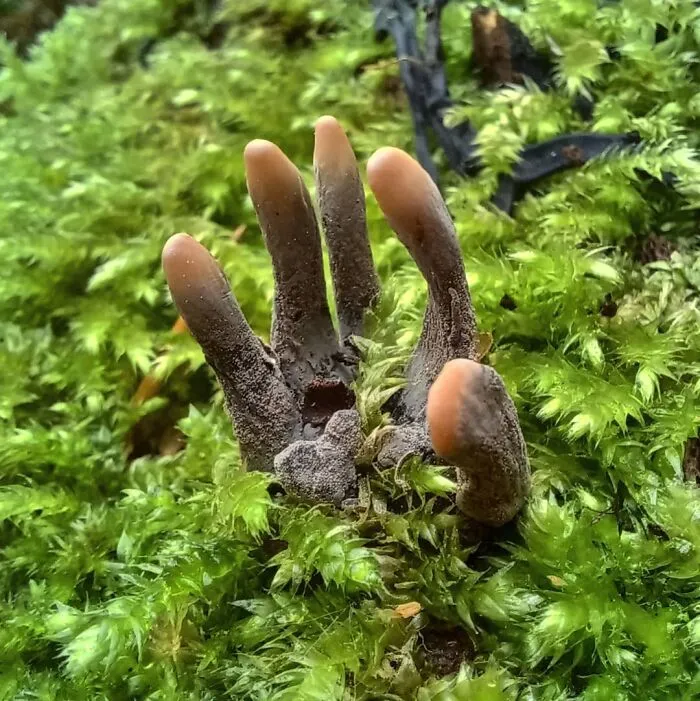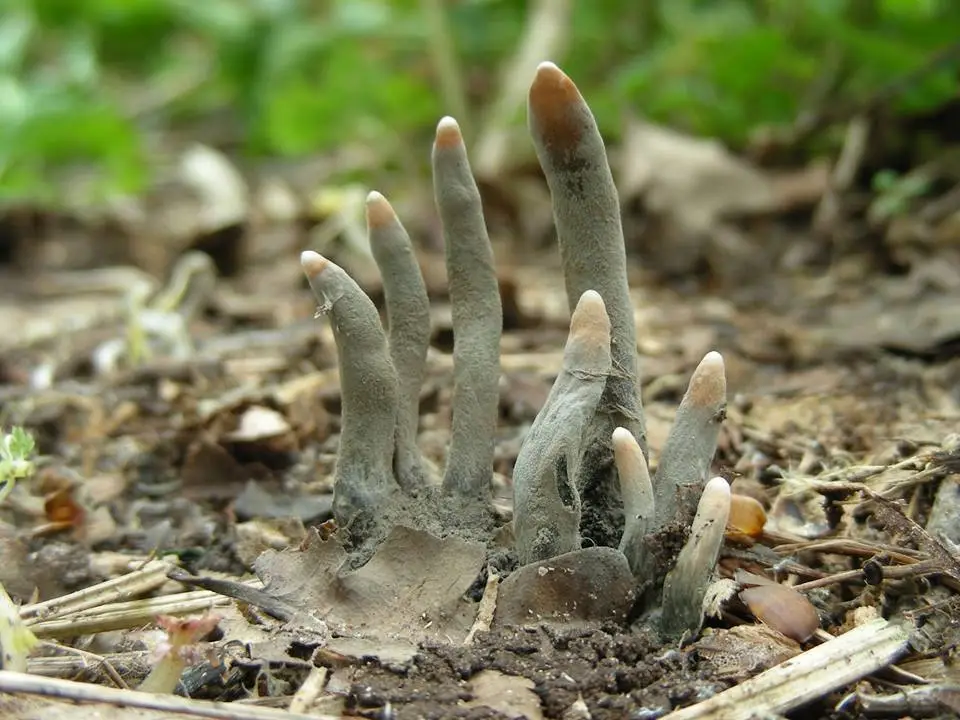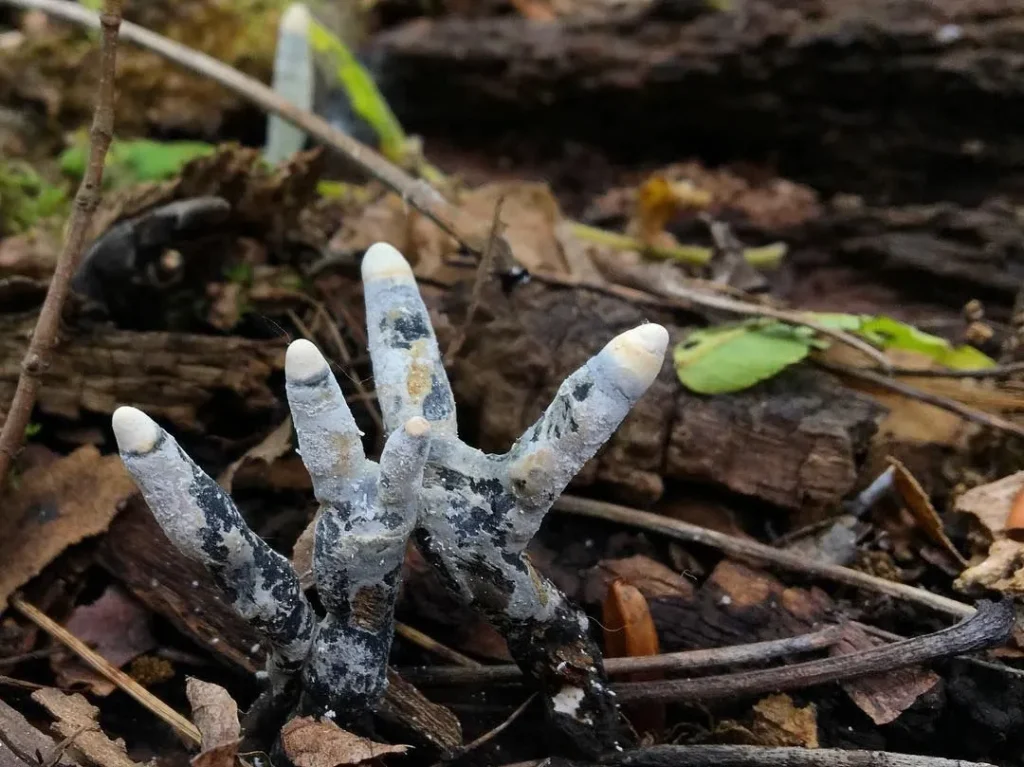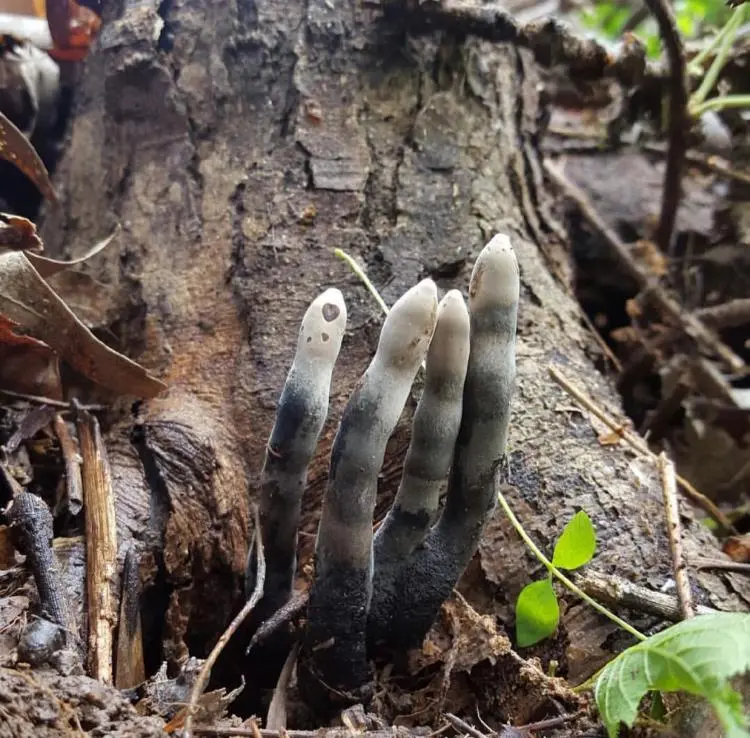As you wander through the dense forest, here is a chilling sight that captures your attention. Among the fallen leaves and decaying wood you detect the peculiar and somewhat ominous shape of “Dead Man’s Fingers” fungus. Undulating and seemingly groping towards the observer it appears more like dead flesh clawing its way up from the ground.
“Dead Man’s Fingers,” or Xylaria polymorpha, belongs to the special types known for its striking appearance. This can be typically seen growing on wooden surfaces and more specifically on decaying. Looking like the fingers of a human being, it becomes a favorite site for lovers of nature and curiosity quenchers.
So, let’s dive into the story unveiled by the Dead Man’s Fingers. We will explore the preferred biomes of the species, its life cycle and most importantly the role it has in the ecology of our environment. Journey though this ghostly fungus will help one get a glimpse of the beauty that is out there in this rather large universe.
1. Unveiling the Mystery
1.1 What is Dead Man’s Fingers?
Dead Man’s Fingers is scientifically known as Xylaria polymorpha. Simply, it is a fungus that can hardly be overlooked because of its rather sinister appearance. It is usually found on the substrates of the decaying woods, although it is mostly associated with the hardwoods. Here, this Saprophytic histone fungus is in fact distractive for decaying of the dead matter and recycling of nutrients for existence in the environment.
The fungus forms structures that resemble charred and ashen human fingers jutting out from the wood. These are in fact the spore-producing structures often measuring a couple of inches long for the larger forms. Moreover, they begin as pale white and gravitate to black as they grow.

Photo: Unknown
1.2 Myths and Legends
Fiction and myths have covered the enticing appearance of Dead Man’s Fingers to become a part of various societies’ popular culture. Due to their finger-like appearance, they have been mostly related to the other world or the demonic realm. In some of the tales, it is described as the dead person’s fingers reaching out to grab one from the grave hence the name the evil finger.
Folklore has it that if one comes across the stump while taking a stroll in the woods, it is bad luck or that the spirits of some persons are still roaming the earth. Despite the fact that these stories are fables, they reveal the fact that nature is the source of mythology and how such myths enrich the captivating fascination of certain natural phenomena. Accordingly, it is making the Dead Man’s Fingers as an object of scientific study as well as folklore legend.

Photo: Unknown
2. The Habitat and Growth of Dead Man’s Fingers
2.1 Preferred Habitats
Dead Man’s Fingers is a fungus that prefers to grow on the wood of several species of trees that are in the process of decomposing. This type of pest primarily feeds on the hardwood varieties like beech, maple, elm, and most likely on apples. They are favorable environments that contain all that is required in growing this fungus too. Moreover, they prefer areas where the vegetation is dense and the access to sunlight is limited for living.
2.2 Growth Process
It is important to mention that the life cycle of Xylaria polymorpha begins as a spore. Apart from this, it is a very beneficial fungi to nature as it helps in recycling of dead plant materials and feeds back the nutrients to the soil. Although the latter means the decay of the building, it is a positive sign every biologist wants to witness on their site. Simply, these structures release spores to continue the cycle by spreading to new areas as conditions allow.
2.3 Signs of Presence
The appearance of Dead Man’s Fingers on a tree or fallen log often signals that the wood is in an advanced stage of decay. This fungus is one of nature’s recyclers, aiding in the breakdown of dead organic material and returning nutrients to the soil. While its presence indicates decay, it is also a sign of a healthy ecosystem at work. Moreover, this plays a major role in forest ecology by helping to clear away dead trees. It also helps the process of maintaining the balance of the forest habitat.
3. Ecological Impact and Importance
3.1 Role in the Ecosystem
Hope you all know that Dead Man’s Fingers is an important fungal species in the ecosystem. It is as this is involved in the decomposition of wood and helping in nutrient cycling. Here, it is involved in the process of decomposing dead wood, decomposing the complex organic compounds within the wood into more easily utilizable ones for other small microorganisms in the soil. Apart from clearing the forest foliage and floor of dead materials, this process also makes the forest floor to be fertile due to the nutrients recycled back into it. This nutrient recirculation is very critical in sustaining the health of the forest ecosystems as well.

Photo: Unknown
3.2 Interactions with Other Species
Due to the morphology and versatility of Dead Man’s Fingers, several interactions occur in its environment. It is because this fungus is likely to serve as a home and source of mince to different species especially insects with a preference for fungal based diets. So, these insects in return help to populate the spores of the fungus to spread all over the forest floor. Also, Dead Man’s Fingers is commonly found in association with other fungi as it enhances fungal species diversity.

Photo: Unknown
3.3 Conservation and Concerns
Although fungi like Dead Man’s Fingers are essential components for the development of ecological systems, fungi are vulnerable to losing their habitats and adverse changes in the environment. Normally, there is the lack of focus on fungal species in consistently broader environmental conservation manners. The most important reasons for the conservation of these places is related to the stability of the forest environment. Since fungi are found in areas that require protection, the conservation helps in giving a boost to the natural balance of interdependent life forms.
Conclusion
Beyond just being a folklore drowning tale, Dead Man’s Fingers is rather a startling organism that is almost as mesmerizing as it looks. It is a vital player in the ecosystem that contributes to wood decomposition and nutrient cycling. Its presence in forests can also be explained by the process of decay and renewal that has been occurring in the forest for a long time, and testifies to the necessity of fungi in the functioning of the forest ecosystem. So, learning about the existence of such fungi as Dead Man’s Fingers help people to grasp the relations of the forest environment. Therefore, understand the importance of such unusual species to meet for the preservation of life. Let’s remember the significance of these incredible fungi, which remind us of the beauty and mystery lurking in the shadows of the underworld.
You may be interested in reading this article: Golden Surprise: Unveiling the Mystery of the Yellow Penguin. We also invite you to explore more of our captivating content on our channel. Double muak!

Pingback: Whale of a Surprise: Sneaky Whale's Comical Encounter with Unwitting Tourists -